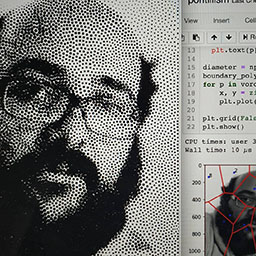

As an artist, my works talk about how technology shapes society, creating artistic artworks with technology from a critical point of view. I am specially interested in how algorithms shape our society and following this line of research I've developed works as "Money Never Sleeps", that talks about the role of the drug overuse of the financial elites in the 2008 crisis and "Death of Things", an artwork about how the technology will survive the human. In the past years I’ve been working with cryptocurrencies and blockchain. With my colleague César Escudero we have written a paper about "Critical Mining" that is featured in the "Artist Re:Thinking the Blockchain" book and developed "Bittercoin".

FANGo is a defense weapon against surveillance capitalism. Hidden under its appearance of mobile phone charger will be provided with a micro controller that takes control of the smartphone plugged in making queries to google, amazon and other search engines, launching videos in YouTube in order to deceive data brokers in their data capture process.
Facebook, Amazon, Netflix and Google were grouped under the acronym FANG as the most important and high-performing companies of the NASDAQ and pioneers of what is known today as surveillance capitalism.
In a similar way as industrial capitalism through its mechanics turned nature or work into a commodity such as real estate or labor, surveillance capitalism turns experiences that occur in the private sphere of the human being into commodities that can be bought and sold.
The difference of this type of capitalism is substantial as it integrates the human experiences of private realm in the production processes without the individual being fully conscious. This affects the economic sphere but also the independence of the human being, because with the logic of maximizing profits the companies will try to modify the user's behaviour without the user being able to do much to defend himself. The aim of the project is to disrupt this mechanics, adding noise to the captured data, making it difficult to transform the captured user data into predictions, thus devaluing the value of the extracted data.
Additional information